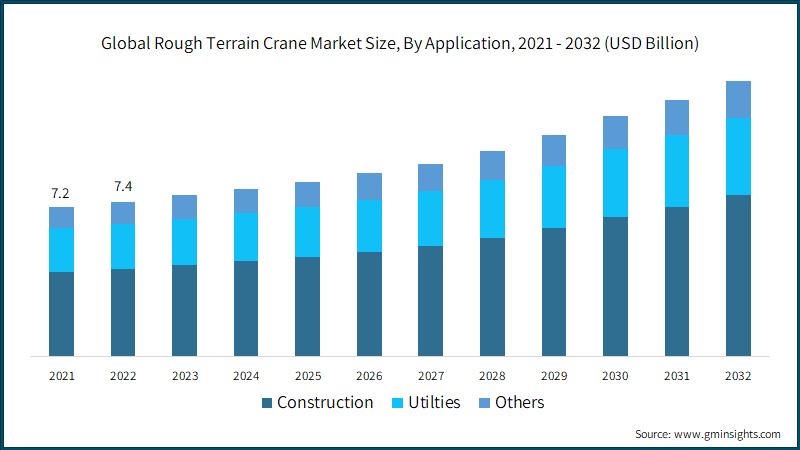Home > Construction > Construction Equipment > Cranes > Rough Terrain Crane Market
Rough Terrain Crane Market Analysis
- Report ID: GMI6391
- Published Date: Aug 2023
- Report Format: PDF
Rough Terrain Crane Market Analysis
The construction segment held approximately 55% share of the rough terrain crane market in 2022. The demand for rough terrain cranes in construction applications is driven by their capability to operate in challenging and uneven terrains. These cranes are essential for lifting heavy materials, machinery, and construction components in construction sites where traditional cranes might struggle. Their mobility and off-road capabilities make them ideal for projects in remote or difficult-to-reach locations. Relevant instances include the use of rough terrain cranes in infrastructure development, building construction, and large-scale projects such as bridge construction and industrial plants, where their versatility and efficiency significantly contribute to completing tasks safely and effectively.

Rough terrain crane market size from the 26-74 tons capacity is poised to gain notable traction from 2023 to 2032, driven by their versatility and ability to handle a wide range of construction and industrial projects. These cranes are well-suited for medium to large-scale lifting tasks in challenging terrains, such as construction sites, mining operations, and oil and gas projects. Their capacity allows them to lift heavy loads, while their mobility enables them to maneuver in rough and uneven conditions. The need for efficient and reliable lifting solutions in various industries fuels the demand for rough terrain cranes with 26-74 tons capacity.

North America rough terrain crane market size crossed USD 2.6 billion in 2022 and is anticipated to reach USD 4 billion in 2032. Rough terrain cranes are witnessing high demand in North America due to the region's robust construction and infrastructure development activities. With numerous ongoing projects in urban areas and remote regions, the need for versatile and reliable lifting equipment has increased. The oil and gas industry's exploration and extraction operations in rugged terrains further boost the demand for rough terrain cranes. Instances of high demand can be seen in major cities like New York, Los Angeles, and Houston, where construction projects and industrial activities rely heavily on rough terrain cranes to meet their lifting requirements.

